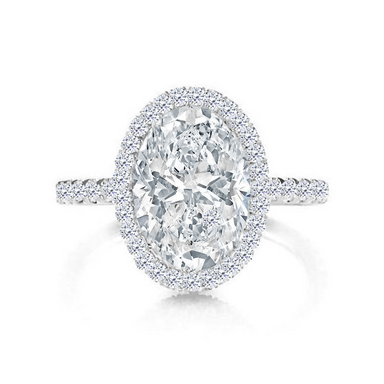

Oval Allegra Engagement Ring
Details Oval cut diamond in a four-prong setting. Pavé melee round brilliant diamond band. Metals Available in 18ct Rose Gold, White Gold, Ye...
View full detailsColour, Clarity, Cut, Carat
At Armans, all of our jewellery is handmade from premium diamonds, precious metals and gemstones. The Gemological Institute of America (GIA) is one of the most prominent independent diamond laboratories who provide an unbiased assessment of a diamond’s quality according to the 4Cs: colour, clarity, cut and carat. The report also discloses if the diamond has been treated to improve its colour or clarity. All Armans diamonds are GIA certified and come with a GIA certificate which includes a report number. This number can be looked up on GIA’s online database to verify its authenticity.
Discover our collection of fine diamond engagement rings
Details Oval cut diamond in a four-prong setting. Pavé melee round brilliant diamond band. Metals Available in 18ct Rose Gold, White Gold, Ye...
View full detailsDetails Round brilliant cut diamond in a six-prong setting. Rounded band with pavé melee round brilliant diamonds. Metals Available in 18ct Ro...
View full detailsDetails A sparkling diamond is set in the classic four-prong setting of this stunning Oval Madison Engagement Ring. The delicate rounded band adds ...
View full detailsDetails Pear cut diamond in a three-prong setting. Pavé melee round brilliant diamond band and halo. Metals Available in 18ct Rose Gold, White...
View full detailsDetails Cushion cut diamond in a four-prong setting. Pavé melee round brilliant diamond band and halo. Metals Available in 18ct Rose Gold, Whi...
View full detailsDetails Oval cut diamond set in a seamless halo. Pavé melee round brilliant diamond band. Metals Available in 18ct Rose Gold, White Gold, Yell...
View full detailsDetails Cushion cut diamond in a four-prong setting. Pavé melee round brilliant diamond band. Metals Available in 18ct Rose Gold, White Gold,...
View full detailsDetails Round brilliant cut diamond in a six-prong setting. Tapered band with channel set round brilliant diamonds. Metals Available in 18ct Ro...
View full detailsDetails Oval cut diamond in a four-prong setting. Tapered band with channel set round brilliant diamonds. Metals Available in 18ct Rose Gold, ...
View full details













